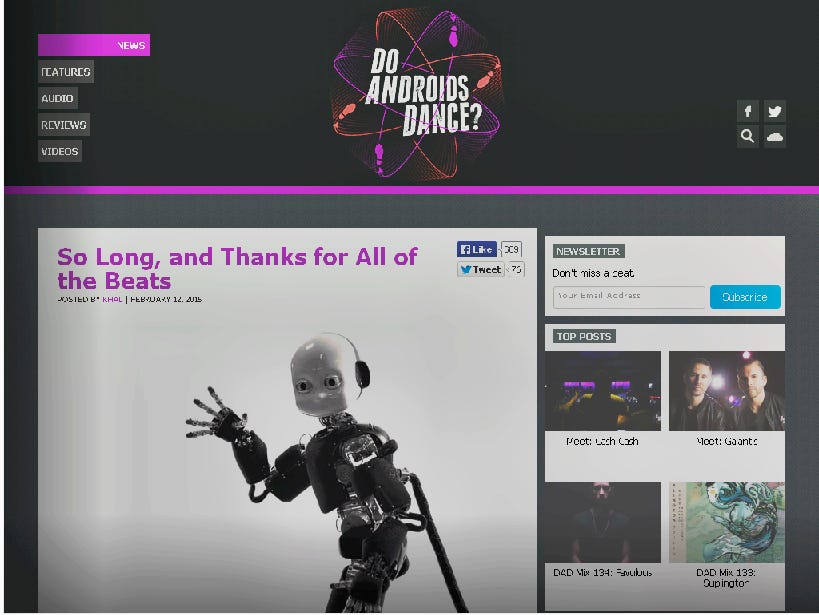How to Pitch "Smaller" Music Artists Without Feeling Small
There's no perfect formula, but here's how I approach it and have done it before- and was published over 940 times.

Most bad pitches come from a good place: hope.
A young artist wants coverage, believes in their work, and doesn’t know where to begin. A writer wants to spotlight fresh talent but doesn’t want to waste their time. This is a quick guide to bridge that gap — not with industry jargon, but with clarity, empathy, and a few hard-earned lessons.
It's been a minute since I've written about music consistently—actually, more like a decade. But I've been thinking about this question a lot lately, as I'm close to completing my M.A. in Journalism at CUNY and several peers have asked how I approach it. While there's no one-size-fits-all formula, here's my usual strategy:
1. Defining “Smaller” (It's All Relative!)
Before you pitch, clearly define what “smaller” actually means to you. Context matters—both for you and for the editor you'll be pitching. Consider these questions to start:
First things first: how do you define "smaller"?
Are they performing live anywhere?
Do they have a solid digital presence?
Are they signed to management or a team?
Do they have previous media exposure or a notable social following despite limited performance experience?
Has their music gone viral even without official releases?
Take a holistic view—get as many data points lined up as possible before reaching out, so when you pitch (to the artist and to the editor), it's clear what unique POV you're bringing. Some artists might sound technically great but lack something truly unique or compelling. Others might seem, shall we say, untraditional, yet still resonate deeply. After all, some people criticize Bob Dylan’s singing—but he's done okay, right?
Remember, especially in arts and culture journalism, saying "I like this artist" or "I don't like this artist" doesn't make you a compelling journalist or create an interesting story.
2. Approaching the Artist (Speak Their Language!)
Most emerging artists are genuinely thrilled when someone cares enough about their work to write about it for a broader audience.
I've found the key to much arts and culture journalism, especially entertainment-focused pieces, hinges on access. I'd suggest reaching out directly first if possible—it's tough to write a profile without the artist’s involvement.
Introduce yourself briefly, highlight something specific about their music that resonated with you, and demonstrate you speak their language. David Byrne once said, “The better a singer's voice, the harder it is to believe what they're saying”—a reminder that sincerity often matters more than polish. Keep your outreach genuine, focused, and respectful. Artists can sense authenticity.
As Lester Bangs advised—or at least Philip Seymour Hoffman did, playing him in Almost Famous:
“You have to make your reputation on being honest and unmerciful.”
(If you're interested in music journalism and haven’t seen Almost Famous, consider that your first assignment. Seriously. Watch it, then let me know what you think.)
Be upfront about your intentions, stay professional, and avoid promising anything you can't deliver. Mention your musical background or passion briefly if you have it, but again, don't go overboard. Balance is key.
Make sure you've got some examples of your work or identifying information ready to underscore your credibility—but consider waiting before immediately pushing links. Starting with a simple, personable introduction can make you more approachable.
3. Approaching the Editor (Do This Right Away... But After The Artist!)
There's no need to wait for an artist's response before pitching an editor.
When contacting editors, mention past articles they've published that you admired, showing you're familiar with their editorial style. Explain you've already reached out to the artist and that you're flexible with shaping the story to match their guidance.
Pitch from an official email or a genuine social media account you actively use. Always include links to your past work—even if it's unrelated to music journalism. Good writing is good writing; the rest can be learned with humility and hustle.
As Rick Rubin says:
“The best work is the work you are excited about.”
Editors (and artists) can sense your enthusiasm—so pitch stories you genuinely care about. And if you don't know who Rick Rubin is, you should definitely find out before you pitch anyone at all.
As for pitching multiple editors at once versus just one—I’ll leave that debate open. Opinions vary widely.
4. Email vs. DM (My Experience, So Your Mileage May Vary!)
Both email and DMs have their advantages. Personally, my two biggest journalism breaks came through DMs: my previous role at Complex Media (mostly music coverage for the defunct DoAndroidsDance- RIP!) and my first byline at Rolling Stone (a sports gaming, business, and culture story, but the point stands!).

DMs can be particularly effective for smaller artists because your message is more likely to reach them directly. Sometimes, artist teams filter out opportunities they honestly shouldn't, for all sorts of reasons. It's often better to have direct contact, but keep in mind there are tradeoffs. If the artist has a team, consider CC'ing them on your email or preemptively mentioning them in your initial outreach and be respectful of their way of doing things.
If you sense hesitation from the artist, offer to shift the conversation to email or ask if they have a manager or publicist they'd prefer you to contact. Many artists aren't natural communicators—that’s why they're musicians, after all.
5. Dale Carnegie It: Genuine Appreciation
One of Dale Carnegie’s key principles is showing genuine interest and appreciation in others and it bears repeating:
“You can make more friends in two months by becoming interested in other people than you can in two years by trying to get other people interested in you.”
Highlight something specific you sincerely admire about an artist's work or an editor's editorial style. Authentic appreciation resonates and can make your interactions far more productive and positive.
6. Transparency & Portfolio
Transparency matters. Be honest about your current situation, especially if you're pitching without a confirmed publication. There's no use (and often harms) in overextending your pitch--in any direction.
In the words of Brené Brown:
“Clear is kind. Unclear is unkind.”
You don’t have to disclose exactly where you plan to pitch (and I wouldn't at all as part of managing expectations), but clearly mention your previous writing experience, your interest in the artist, and your enthusiasm for expanding your horizons and just learning more. (Ironically, I'm actually in the process of re-doing my own portfolio right now!) They may say no now, but it might be a yes later.
A great pitch is less about tricking someone into caring and more about making them feel they already do. If you can do that — respectfully, thoughtfully, and with an ounce of style — you’re ahead of the game.
Your Turn:
What are you excited about right now? Have any songs, albums, live performances, movies, books, or games caught your attention lately? Drop a comment or hit the "Message Jake Lang" button—I want to hear what's moving YOU!
Hope this helps—good luck!
(P.S. I offer creative strategy and media consulting for artists, brands, non-profits, and other organizations across industries. This consulting practice remains separate from my journalism, and I don't guarantee editorial coverage—decisions there remain driven strictly by journalistic merit and editorial discretion. For inquiries about pitching, collaboration, or strategy, just click the button below with a clear idea of how I can help.)


Your advice is so appreciated!